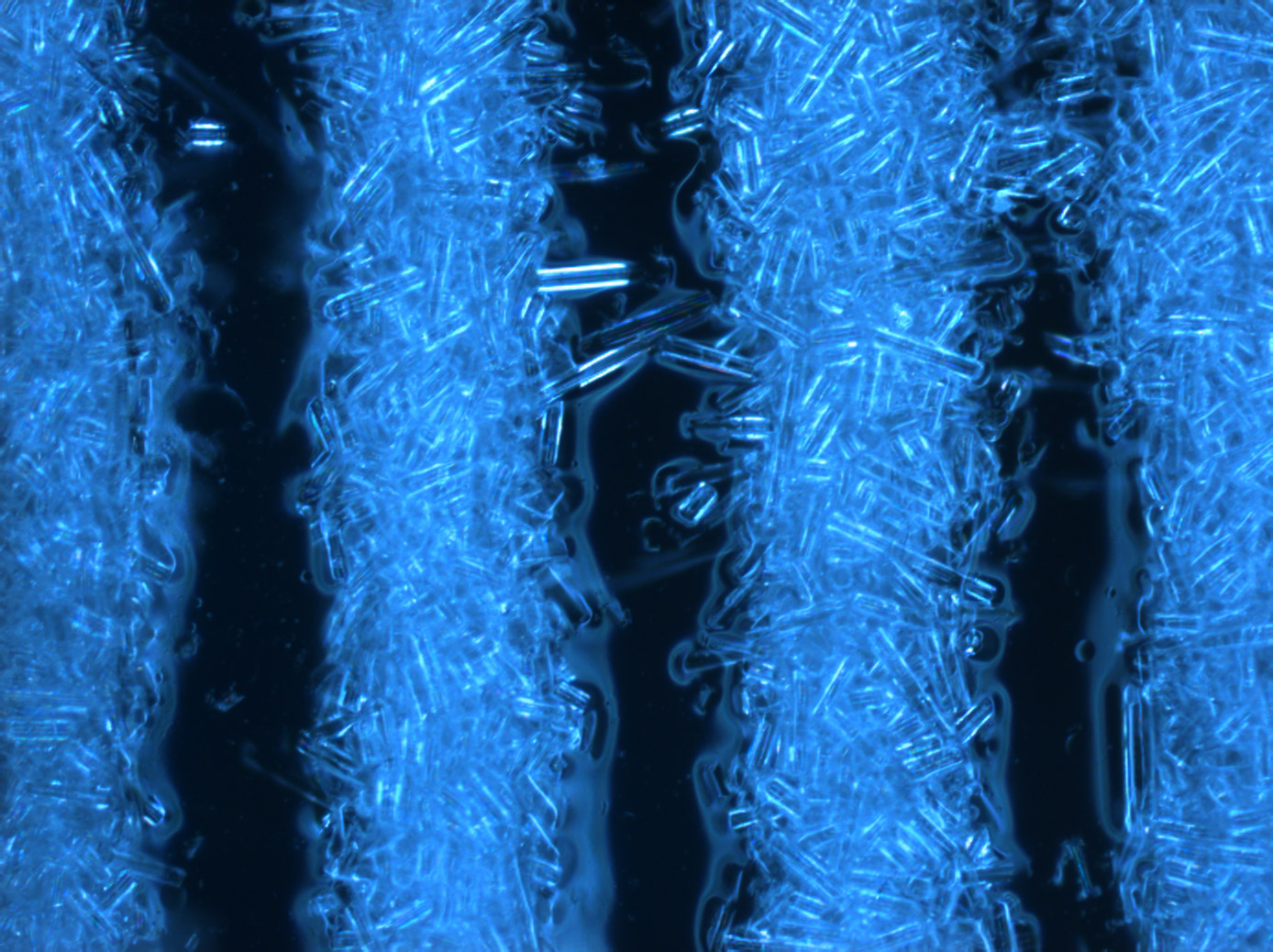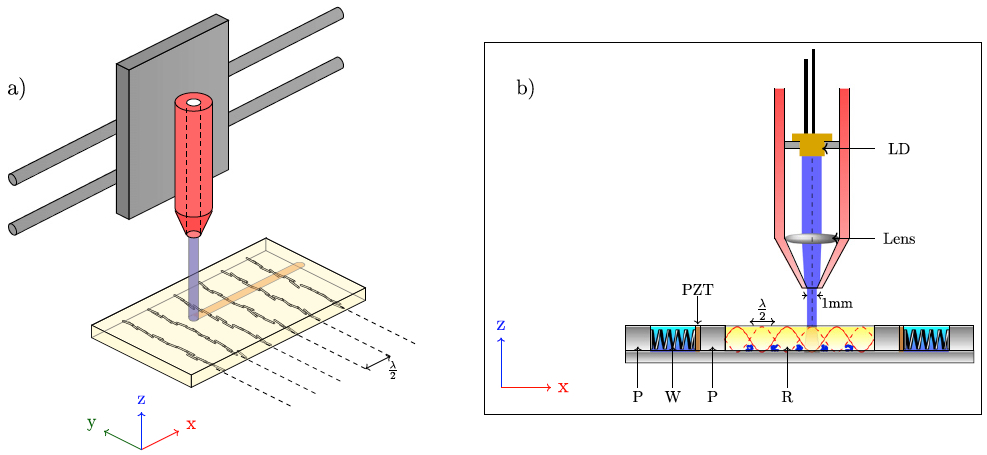How to modify a 3-D printer to print high-performance products
January 20, 2016

Ultrasonic waves form microscopic glass fibers into a pattern of lines, collectively creating a reinforcing microstructure that gives the printed component increased strength. (credit: Tom Llewellyn-Jones, Bruce Drinkwater and Richard Trask)
University of Bristol engineers have developed a new type of 3-D printing that can print strong composite materials.
The new method is based on a modification of an off-the-shelf 3D printer: mounting a switchable, focused laser module and an ultrasonic alignment apparatus.
The method uses ultrasonic waves to position and align millions of microscopic glass fibers to form reinforcement fibers into a framework that gives the material strength. A focused laser beam carriage then cures (hardens) the epoxy resin for printing. The precise orientation of the fibers can be controlled by switching the ultrasonic standing-wave pattern mid-print. The engineers achieved a print speed of 20 millimeters per second, similar to conventional additive layer techniques.

Schematic representation of printer and ultrasonic manipulation rig. (a) Switchable laser module (red) is attached to the print head carriage (gray) and traces out the shape of the printed part. The laser can be deliberately defocused to cure large regions slowly by increasing the height of the laser module. (b) Focused laser beam (blue) cures resin within the cavity of the ultrasonic manipulation device (red). LD=laser diode, P=PMMA, W=Water, PZT=lead zirconate titanate transducers, R=resin. Cross sections of the bundles of glass fibers lying within traps are shown, separated by half a wavelength of the laser light. (credit: Thomas M. Llewellyn-Jones et al./Smart Materials and Structures)
Composite materials are widely used in many high-performance products such as tennis rackets, golf clubs, and airplanes. So this technology should soon enable a much greater range of strong composite materials to be 3-D printed at home and at low cost, the engineers suggest. The method is expected to be useful for a range of smart materials applications, such as printing resin-filled capsules for self-healing materials or piezoelectric particles for energy harvesting.
The study is described in an open-access paper in Smart Materials and Structures.
Matt Sutton, Tom Llewellyn-Jones, Bruce Drinkwater and Richard Trask | The new composite printing process.
Abstract of 3D printed components with ultrasonically arranged microscale structure
This paper shows the first application of in situ manipulation of discontinuous fibrous structure mid-print, within a 3D printed polymeric composite architecture. Currently, rapid prototyping methods (fused filament fabrication, stereolithography) are gaining increasing popularity within the engineering community to build structural components. Unfortunately, the full potential of these components is limited by the mechanical properties of the materials used. The aim of this study is to create and demonstrate a novel method to instantaneously orient micro-scale glass fibres within a selectively cured photocurable resin system, using ultrasonic forces to align the fibres in the desired 3D architecture. To achieve this we have mounted a switchable, focused laser module on the carriage of a three-axis 3D printing stage, above an in-house ultrasonic alignment rig containing a mixture of photocurable resin and discontinuous 14 μm diameter glass fibre reinforcement (50 μm length). In our study, a suitable print speed of 20 mm s−1 was used, which is comparable to conventional additive layer techniques. We show the ability to construct in-plane orthogonally aligned sections printed side by side, where the precise orientation of the configurations is controlled by switching the ultrasonic standing wave profile mid-print. This approach permits the realisation of complex fibrous architectures within a 3D printed landscape. The versatile nature of the ultrasonic manipulation technique also permits a wide range of particle types (diameters, aspect ratios and functions) and architectures (in-plane, and out-plane) to be patterned, leading to the creation of a new generation of fibrous reinforced composites for 3D printing.